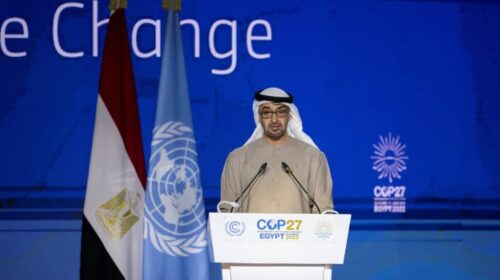There is no question that the energy crisis has forced governments to reconsider their priorities, with climate change dropping down the list. Energy security is now prioritised and government actions reflect this, even in Europe. That has been reinforced by the final deal reached at COP27. It also explains why COP27 made so little progress on emissions reduction.
There is increasing recognition that the world will still need secure and affordable supplies of oil and gas for a long-time to come. This was confirmed at COP27 by the majority of participating states that did not support phasing-down oil and gas. In fact, the COP27 deal now includes a provision to boost “low-emissions energy”, without defining what this means. This is interpreted it to include natural gas, that has the lowest emissions of all fossil-fuels.
Even the International Monetary Fund (IMF) has now recognised these shifting priorities. In the December issue of its Finance and Development magazine, dedicated to the scramble for energy, it states: “A few years ago, in an era of abundant energy supplies, the world’s focus was on curbing fossil-fuel use to achieve net-zero carbon emissions. Today, priorities have shifted amid supply threats and price increases since Russia’s invasion of Ukraine. The scramble for quick solutions to secure affordable and reliable energy could imperil climate action.” But the IMF also warns that “climate security and energy security must go hand-in-hand.”
This message was also driven home by Lord Browne at the World Energy Capital Assembly (WECA) held in London this week – that I participated-in – who emphasised that “transitions do not happen overnight.”
The world has not yet achieved a satisfactory balance to the energy trilemma: affordability-security-sustainability. Energy transition needs careful planning, otherwise it risks losing public support if it comes at the price of economic disruption. This is especially so in developing countries that are dealing with other urgent priorities like health, poverty, and economic growth. The energy crunch has led to a shift in sentiment to security and affordability.
Energy transition
The most important ‘key performance indicator’ is the amount of investment in energy transition. Current investments come to only about 25 per cent of what is needed. According to a new study by McKinsey, getting to net-zero by 2050 will cost an extra $3.5trillion a year. A UN report warned that without major change the world is heading towards a 3C temperature rise by the end of this century.
There is a clear link between population growth, economic growth and energy needs. With the world population expected to reach 9.7 billion by 2050, from 8 billion now, global energy needs will carry on growing. And with China, India and other developing countries aspiring to improve their living standards, primary energy demand is expected to rise by close to 20 per cent by 2050, based on known policies and trends. Even though most of this growth will be provided by green energy, in real terms fossil-fuel demand will remain close to today’s levels even by 2050. This could of course change if the world takes aggressive measures to reduce dependence on fossil-fuels, but that is still to happen and certainly the current energy and economic crises are delaying such action.
In addition, long-term intermittency is still a problem, making renewables unreliable. Until it is addressed satisfactorily there will be a need for baseload energy, preferably natural gas and not coal, that as a result of the crisis has seen a resurgence.





